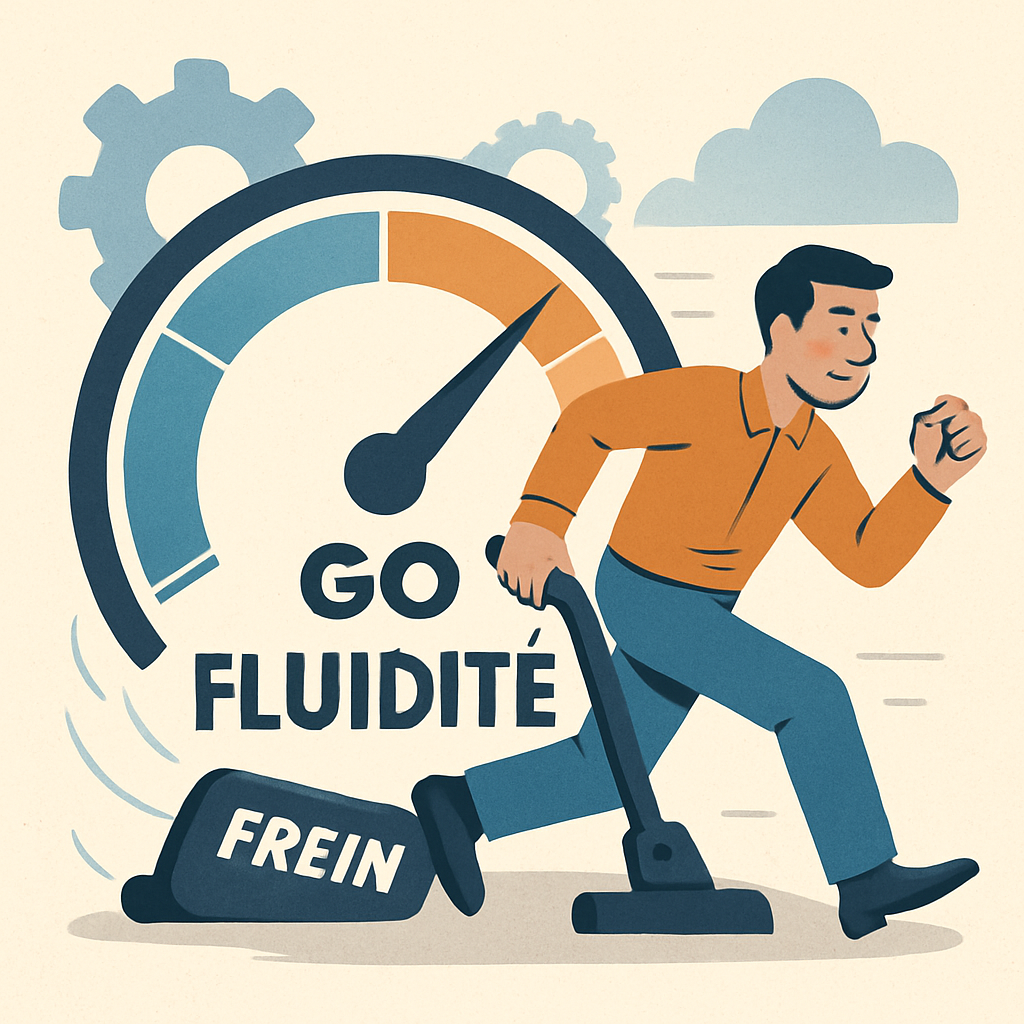Introduction
For a long time, I believed that efficiency was all about speed. Better planning, sharper prioritization, faster execution… accelerating at all costs.
But over time, and especially after several impactful team and solo experiences, I realized that the pursuit of raw speed was a trap.
True efficiency doesn’t come from speed. It comes from flow.
In this article, I invite you to explore this shift in perspective: why trying to go faster often slows us down, and how building sustainable performance means cultivating flow.
The obsession with speed: a symptom of a skewed vision of performance
Wanting to go faster is natural. Our modern environment glorifies speed:
- Tight deadlines.
- Constant notifications.
- Social validation of urgency.
Psychologically, speed gives the illusion of control. The faster we move, the more we believe we are progressing. But often, this obsession hides invisible dangers:
- Loss of clarity: acting without discernment.
- Cognitive overload: more tasks, fewer priorities.
- Empty optimization: improving what ultimately doesn’t matter.
Speed without a clear direction becomes meaningless motion.
When perfectionism becomes a false ally
My natural perfectionism long pushed me to do everything perfectly.
I spent countless hours polishing minor details, thinking that it would increase my value.
But in reality:
- A lot of energy was spent for marginal impacts.
- I experienced a latent form of exhaustion.
- And above all, a constant feeling of “never moving fast enough.”
What I realized: striving for perfection everywhere slows down real essential progress.
Productivity ≠ Speed: the classic confusion
I fell victim to this confusion for a long time.
Real productivity isn’t about producing faster. It’s about maximizing useful impact with the least friction possible.
Pareto’s law illustrates this perfectly: 20% of the efforts produce 80% of the results. But we must know where to invest that 20%.
The real key: cultivating flow
Over time, I redefined my internal compass:
Flow comes before speed.
Flow means:
- Simplifying workflows.
- Removing invisible friction.
- Radically prioritizing what creates value.
Trying to move faster without flow is like pressing the accelerator while the handbrake is still engaged.
Two real-world experiences that changed my perspective
1. Technical architecture: the impossible acceleration
In a team of about 15 people, everyone was trying to produce faster. More story points, more “best practices.”
But nothing worked: technical architecture was the invisible ceiling. Accumulated technical debt made every evolution slow and risky.
The problem wasn’t the willingness or the methods. It was the structural context.
2. Automation: freeing energy instead of forcing it
In another team (10-12 people), a significant portion of time was consumed by administrative and tracking tasks.
Instead of “doing it better,” we automated those tasks.
The immediate results:
- Freed capacity.
- Focus on high-value missions.
- Massive improvement in delivery quality and team well-being.
The real levers of sustainable performance
Instead of trying to go faster, today I focus on:
- Structure: what systemic obstacles are slowing us down?
- Clarity: what are the real priorities?
- Flow quality: where are the hidden frictions?
- Collective dynamics: how can we move forward together without unnecessary tension?
This approach echoes both Parkinson’s Law (tasks expand to fill the available time) and Mihaly Csikszentmihalyi’s flow theory: a state of optimal experience between skill and challenge.
Conclusion: move better, not faster
Real efficiency isn’t about pushing harder. It’s about removing the brakes, simplifying paths, and creating flow.
When flow is present, speed follows naturally.
Trying to accelerate without flow is like running through quicksand.
Cultivating flow means moving lightly, aligned, and efficiently.
What about you?
In your daily life, what is your main invisible brake that slows down your progress?
I’d love to hear about your experiences in the comments or chat with you privately!


Leave a Reply